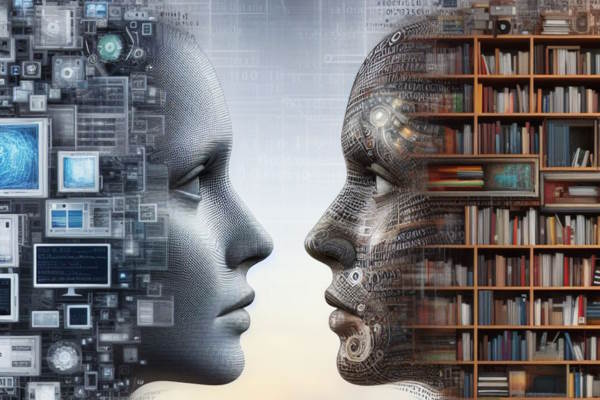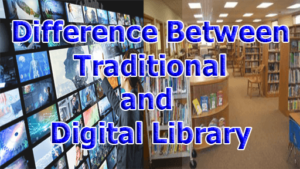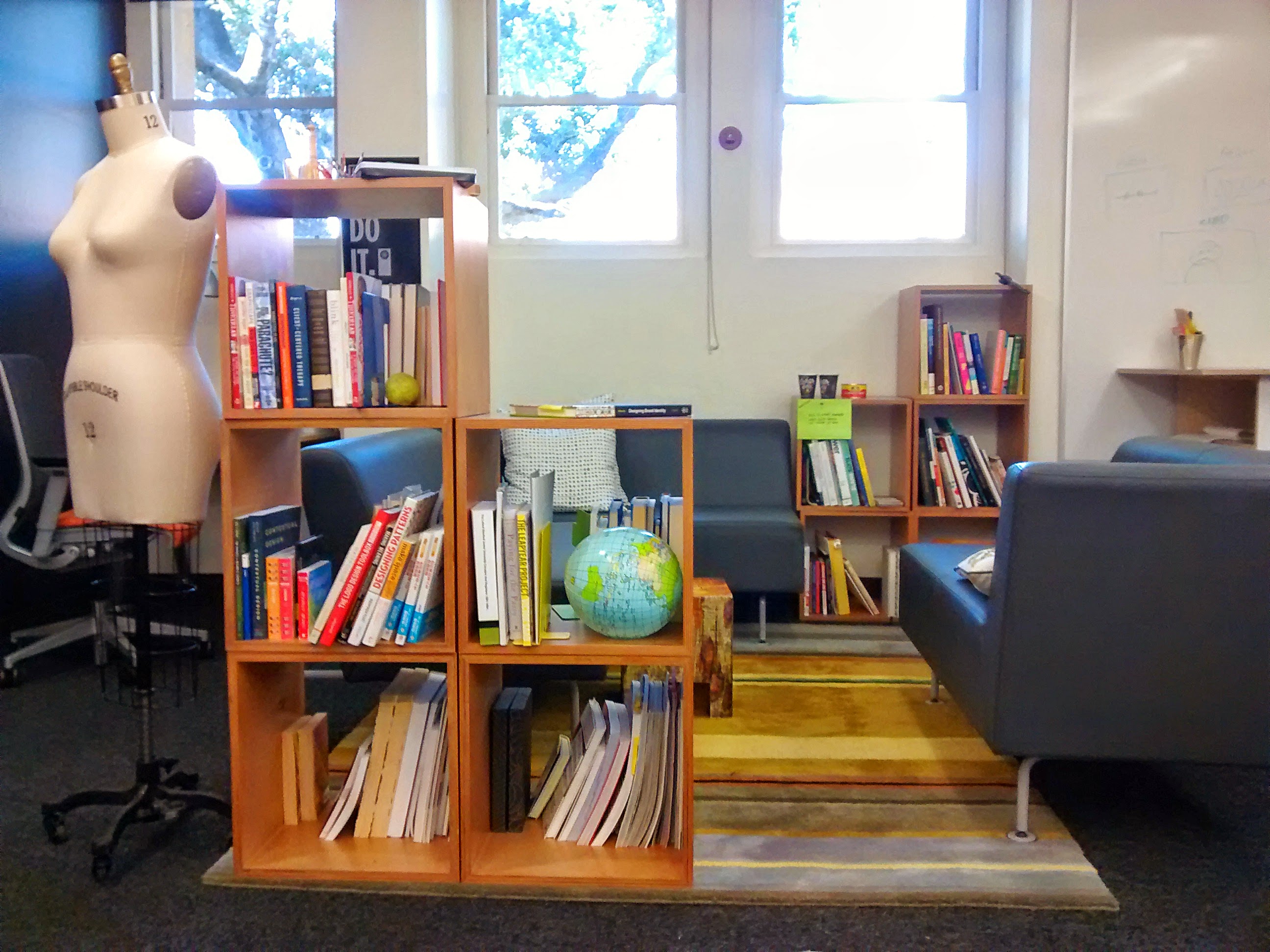- Undergraduate
- High School
- Architecture
- American History
- Asian History
- Antique Literature
- American Literature
- Asian Literature
- Classic English Literature
- World Literature
- Creative Writing
- Linguistics
- Criminal Justice
- Legal Issues
- Anthropology
- Archaeology
- Political Science
- World Affairs
- African-American Studies
- East European Studies
- Latin-American Studies
- Native-American Studies
- West European Studies
- Family and Consumer Science
- Social Issues
- Women and Gender Studies
- Social Work
- Natural Sciences
- Pharmacology
- Earth science
- Agriculture
- Agricultural Studies
- Computer Science
- IT Management
- Mathematics
- Investments
- Engineering and Technology
- Engineering
- Aeronautics
- Medicine and Health
- Alternative Medicine
- Communications and Media
- Advertising
- Communication Strategies
- Public Relations
- Educational Theories
- Teacher's Career
- Chicago/Turabian
- Company Analysis
- Education Theories
- Shakespeare
- Canadian Studies
- Food Safety
- Relation of Global Warming and Extreme Weather Condition
- Movie Review
- Admission Essay
- Annotated Bibliography
- Application Essay
Article Critique
- Article Review
- Article Writing
- Book Review
- Business Plan
- Business Proposal
- Capstone Project
- Cover Letter
- Creative Essay
- Dissertation
- Dissertation - Abstract
- Dissertation - Conclusion
- Dissertation - Discussion
- Dissertation - Hypothesis
- Dissertation - Introduction
- Dissertation - Literature
- Dissertation - Methodology
- Dissertation - Results
- GCSE Coursework
- Grant Proposal
- Marketing Plan
- Multiple Choice Quiz
- Personal Statement
- Power Point Presentation
- Power Point Presentation With Speaker Notes
- Questionnaire
- Reaction Paper
- Research Paper
- Research Proposal
- SWOT analysis
- Thesis Paper
- Online Quiz
- Literature Review
- Movie Analysis
- Statistics problem
- Math Problem
- All papers examples
- How It Works
- Money Back Policy
- Terms of Use
- Privacy Policy
- We Are Hiring

Digital Libraries vs. Physical Libraries, Essay Example
Pages: 2
Words: 579
Hire a Writer for Custom Essay
Use 10% Off Discount: "custom10" in 1 Click 👇
You are free to use it as an inspiration or a source for your own work.
According to Christine L. Borgman of the Department of Information Studies at the University of California, Los Angeles, the best scholarly definition of a digital library is an electronic or computer-based collection that contains “richer content and fuller capabilities” than a traditional database or “information retrieval system” (1999, p. 231). However, a more broad and comprehensive definition proposed by Borgman in 1992 when Internet access and computer use in public and academic libraries was relatively limited runs as thus–“a set of information resources, databases of text, numbers, graphics, sound, video, and a set of tools and capabilities to locate, retrieve and utilize the information resources available” (1999, p. 233).
In simplest terms, a digital library, sometimes housed in a traditional brick and mortar library, contains materials that have been digitally transferred from conventional “hard copies” like books, magazines, academic journals, newspapers, and other print sources; this may also include artwork, graphics, and audio/visual material. In some instances, materials have been transferred to what is known as microfiche which can be viewed with special devices similar in nature to the now outdated microfilm storage system. A prime example is the Internet Archive or Internet Library which contains mostly “historical collections that exist in digital format,” along with audio, moving images, software, and archived web pages that can be accessed free of charge by students, researchers, historians, and academic scholars (Internet Archive, 2013).
In addition, a digital library can be a specialized collection of information and data designed for a specific group of users or a community. As Borgman explains it, this type of digital library provides “functional capabilities (that) support the information needs and uses of that community.” In many instances, this specialized digital library allows “individuals and groups (to) interact with each other” via the use of data, information, and knowledge resources and systems” (1999, p. 234).
For example, museum curators and archivists can access information and data on historical objects, artwork, and their provenance or history of ownership; also, police organizations can access special collections that contain criminal records held by state-based law enforcement organizations and of course the Federal Bureau of Investigation and the U.S. Department of Justice.
In contrast to a digital library, the traditional physical library or brick and mortar institution holds collections made up of “hard copies” like books, magazines, academic journals, newspapers, and audio/visual materials stored on magnetic tape, microfilm, and microfiche. A good example is the traditional university library which provides access to materials for students and instructors. However, as pointed out by J. Pomerantz, the services provided by a traditional physical library are somewhat limited when compared to a true digital library. Although both of these entities or environments provide needed services to users, the recent “development of DLs has enabled the realization of services both like and unlike those traditionally provided” by a library that occupies a physical space (2008, p. 2). Perhaps the most important difference between a physical library and a digital library is that the first, in relation to service, is provided by a human being (a librarian), while a digital library is served by a search engine or electronic database which when compared to a person allows rapid access. Thus, as time and technology progresses, the day may arrive when physical libraries become non-existent and redundant.
Borgman, C.L. (1999). What are digital libraries? Competing visions. Information Processing and Management 35, 227-243.
Internet Archive. (2013). Retrieved from archive.org/about.
Pomerantz, J. (2008). Digital (library services) and (digital library) services. Texas Digital Library. Retrieved from http://journals.tdl.org/jodi/index.php/jodi/article/view/227/210
Stuck with your Essay?
Get in touch with one of our experts for instant help!
Evaluation of Streamlining the Medication Process, Article Critique Example
Benefits of Weight Training in Todays Society, Essay Example
Time is precious
don’t waste it!
Plagiarism-free guarantee
Privacy guarantee
Secure checkout
Money back guarantee

Related Essay Samples & Examples
Voting as a civic responsibility, essay example.
Pages: 1
Words: 287
Utilitarianism and Its Applications, Essay Example
Words: 356
The Age-Related Changes of the Older Person, Essay Example
Words: 448
The Problems ESOL Teachers Face, Essay Example
Pages: 8
Words: 2293
Should English Be the Primary Language? Essay Example
Pages: 4
Words: 999
The Term “Social Construction of Reality”, Essay Example
Words: 371
Digital Libraries Vs. Traditional Libraries: What to Choose Today?

The idea of digital libraries once replacing the traditional ones has been around since the very dawn of the digital age. Isn’t it more convenient and efficient to keep books in electronic format than to stick to old-fashioned physical libraries with their shelves, repositories and maddeningly complex filing systems? In this article, you’ll choose sides due to the information given to you. Besides, don’t forget to answer the quiz questions to know exactly which library (an online or traditional one) is the best option for you.
However, despite 10 great breakthroughs of 2018 in technology , traditional libraries are still around – the British Library in London, the Library of Congress in Washington, D.C., the New York Public Library, the Bavarian State Library and many more which you can find in the list of 25 most famous libraries of the world . Although they don’t shy away from implementing some of the novelties into their structure and organization – all of them have quick access to the Internet. Well, why is it so? Is it going to keep that way? Just like in case with any other topic, making predictions is an ungrateful task, for the world is most likely to develop in the least predictable way – just like it always does. Let’s look at the ‘battle’ between digital and traditional libraries.
Table of Contents
Round #1. Digital Library Vs. Traditional Library

Of course, digital libraries are more convenient, cost-efficient and, truly speaking, less energy-consuming to use – you don’t have to go somewhere to find some valuable material, for example, to write a research paper. What do you usually do? You open Google, insert some words to find the necessary information and voila – the first search results are relevant to your topic. Right? But if we speak about academic writing, it isn’t always helpful to use the same information seeking strategy. Not all those online sources of information are quite reliable to refer to in an essay or term paper. Mind it! Even if you are used to doing so, check the source reliability on a first-priority basis and only then use it in your writing assignment. In these cases, it is better to use online search engines like Google Scholar to find scholarly literature. Alternatively, you can go to a local or university library and… spend hours to find what you are searching for. But you’ll find the printed copies of scientific articles containing highly informative data.
The first round is played – no sides! A digital library is a place which you can access any type of information quickly. On the other hand, because of the information overload, it may be difficult to find reliable information online which you could use in your essays or research papers like a dissertation or thesis. So you go to a library and what is the result? A huge amount of time planned for the other steps in writing a research paper is spent. As a result, it is time-consuming to attend traditional libraries, but it is more reliable. Go on reading the article to find out which library will win the ‘battle’!
Round #2. Digital Library Vs. Traditional Library
With the majority of the world’s population connected to the Internet, it is theoretically possible to create a single repository of all the books humanity has ever generated so that anybody can access any of them at any time – within 24 hours a day and 365 days a year. There are such valuable databases but are all they affordable? “Pay so-and-so much” is the first note after a short preview of a necessary article. Right? And let’s calculate how much time do you need to spend on writing a research paper that is usually based on 5-7 references. There is no guarantee that all of them are in an online database you are going to pay for. And what to do?
You can go to a traditional library and… you need to pay as well. As a rule, a library offers its users to apply for membership of a library. You need to provide all the necessary personal details (your name, address, date of birth), which are underpinned with certain official documents (passport or driver license). You can read more information on how to get a library card to do it right the first time. As we know that every minute is precious for a student, especially when writing a last-minute essay, we recommend you take the necessary documents not to return without the necessary data for your research paper.
Besides, be ready to pay either for library membership or the single use of library services. However, you should know about library fees and fines. For example, at the New York Public Library , a borrower who doesn’t return library materials on or before the due date is fined on average $1 per day for it. Mind it to save your money! Additionally, use a reminder on a phone to remember about all the important dates in your life – they can be paper submission dates or dates when you need to make bill payments.
The second round is played and what we have? There is the necessity to pay for library services both online and traditional ones. So it’s up to you which library is better for you. Don’t miss the last round between an online and traditional library so that you could make the final decision.
Round #3. Digital Library Vs. Traditional Library
The library system, which allows you to take a book for a period of time, doesn’t work well with digital texts. A digital book is not the same as a physical book – you cannot copy the latter without the great expense of time and money while copying the former takes less than a second. There are no limitations as to how many people can use a digital copy of the book. This means that traditional model, in which a writer writes, a publisher publishes and a reader buys and reads doesn’t apply well here. Hence all the problems with digital copyright, prosecution of those who share books and other digital items via the Internet and so on.
Humanity still cannot work out an effective way of solving this problem. Let’s imagine this worldwide library containing all books in existence and providing unlimited access to all of them free of charge. It may sound nice, but what is the motivation to write new books if the author doesn’t get anything out of it? Until this problem is solved we will have to work with what we have now: traditional libraries with physical copies of the books and limited access to digital texts, paid access to books online and illegal e-text libraries.
However, we all probably understand that traditional libraries slowly but steadily become the things of the past. Even now a library is not what it was a couple of decades ago, let alone fifty years or more. Any big library contains video and audio materials, access to the Internet and digital texts, utilizes electronic cataloging systems and so on. It is only a matter of time before humanity thinks of an effective way to use digital libraries that would sit well with both readers and writers. The physical book will sooner or later become a rarity, for it is inconvenient to use, store and carry about.
Eventually, it is highly possible that digital libraries will replace traditional ones in course of time. We just don’t know what they will be like. We’ll see how it goes! In the meantime, answer 7 questions to know what type of library can help you right now.
A ‘Library Choice’ Quiz: Which Library to Choose to Study Well?

- Used to reading online and via ebook?
- Need quick access to books, journals, and other publications?
- Have no time to go to a library?
- Prefer listening instead of reading?
- Need up-to-date information?
- Feel more comfortable at home?
- Often look for the material to learn?
If most of your answers are “yes”, feel free to use a digital online instead of a traditional one. As for the question, “Prefer listening instead of reading?”, there is such a useful feature as a text-to-speech (TTS) option available to you either on Google, Microsoft or Adobe Reader. Just activate it to take advantage of listening to the found information.
On the other hand, don’t pass up an opportunity to visit such a peaceful place as a library with its cozy atmosphere stimulating to focus on your work – be it writing or reading. Make progress in the studies as you like, but don’t ignore all the practical tips on how to do it properly.

Too busy to write your paper by yourself?
You are using an outdated browser. Please upgrade your browser to improve your experience.

Ten Reasons Libraries Are Still Better Than the Internet
By Marcus Banks | December 19, 2017

“Thanks to the internet, we no longer need libraries or librarians.” You most likely hear some variation on that theme pretty regularly.
Sixteen years ago, American Libraries published Mark Y. Herring’s essay “Ten Reasons Why the Internet Is No Substitute for a Library” (April 2001). Technology has improved exponentially since then—social media didn’t even exist yet. But even the smartest phone’s intelligence is limited by paywalls, Twitter trolls, fake news, and other hazards of online life. Here are 10 reasons why libraries are still better than the internet.
- Libraries are safer spaces. The internet brings people together, often in enjoyable and productive ways, such as over shared interests (pop culture blogs, fanfic sites) or common challenges (online support groups). But cyberbullying and trolling can leave people reluctant to engage with folks they disagree with or to share their ideas in the first place. Libraries are places where people can gather constructively and all are welcome.
- Libraries respect history. Web pages are ephemeral, and link rot is a real problem. The content of library collections is much more stable. Printed materials are generally published on acid-free paper, which will not disintegrate. And librarians are leading the way to bring similar stability to the web through services like the Internet Archive and perma.cc .
- Librarians digitize influential primary sources. While looking at historical artifacts is valuable, repeated physical handling can damage them. Making digital versions of important works available online—as in the National Library of Medicine’s Turning the Pages project —is one solution. Library digitization projects also provide information to people who do not have the resources to travel to a particular library. Librarians are using the emerging technology of the internet to further the timeless mission of providing better access to information. The internet is the platform that enables this progress, but librarians are doing the work.
- Librarians are leaders in increasing online access to scholarly information. The open access movement makes scholarly articles available to all readers online, and librarians have been strong advocates of the movement for more than a decade. This access is especially critical when reporting the results of medical research, which is often funded by taxpayer dollars.
- Librarians are publishers. Scholarly publishers still provide the journals and books that researchers develop. But librarians have joined these efforts by becoming publishers themselves. New librarian-led publishing initiatives take full advantage of the web and generally make new work available on an open access basis. One example of library publishing, which is common in academic libraries, is the institutional repository . These repositories collect and preserve the broad range of a college or university’s intellectual output, such as datasets gathered in research studies, computer code used in software development, and conference proceedings.
- Libraries host makerspaces. Given that makerspaces provide venues for creativity, learning, and community, it only makes sense that libraries champion them. The maker movement has grown rapidly— in 2016 there were 14 times as many makerspaces as in 2006 . Both public and academic libraries host makerspaces . You can learn about makerspaces online, of course. But to visit one you have to venture into the physical world.
- Librarians can help you sort the real news from the fake. While a plethora of useful, accurate, and engaging content is available online, the web is filled with inaccurate and misleading information. “Click bait” headlines get you to click on the content even if the underlying information is superficial or inaccurate. Misinformation is the spread of deliberate falsehoods or inflammatory content online, such as the Russian-backed ads placed on social media during the 2016 US presidential election . Librarianship has always been about providing objective, accurate, and engaging information that meets the needs of a particular person. This has not changed, and it is why librarians are experts in information literacy .
- Librarians guide you to exactly what you need. Google is an impressive search engine, but its results can be overwhelming, and many people do not know to filter them by content type (such as .pdf) or website source (such as .gov). Google offers many search tips , which are useful but generic. A conversation with a librarian can clarify exactly what you are looking for and figure out the best way to use Google—or many other resources—to find it.
- Librarians do not track your reading or search history to sell you things. Amazon’s book purchase recommendation feature is useful for learning about new books. But this usefulness comes at the expense of your privacy because your reading data is valuable business intelligence for Amazon. The same is true for your web searching history, which is why you often see ads for a product for weeks after searching for it just once. Librarians value and protect your privacy .
- Librarians do not censor. One core value of librarianship, as exemplified by the work of ALA’s Freedom to Read Foundation , is thwarting censorship and allowing the free and full exchange of ideas. The internet is a powerful tool for information sharing, but it takes human advocates to stand for information freedom.
Libraries continue to provide benefits that are both tangible—such as community spaces and human interaction—and harder to quantify—access, privacy, intellectual freedom. The internet is an indispensable and irreplaceable tool for modern living. But it is not a library and will not replace the work of librarians.
MARCUS BANKS is a journalist with prior experience as an academic library administrator.
Tagged Under
- information literacy
- intellectual freedom
- makerspaces
- open access
- privacy rights
RELATED ARTICLES:

Fighting Fake News
How libraries can lead the way on media literacy.

Libraries and the Art of Everything Maintenance
Hosting repair events reduces waste, brings in new patrons.
Softlink IC Blog
Subscribe to our regular updates
- Digital Library vs Physical Library: The Ultimate Face-off

Libraries have been an integral part of our society for thousands of years. They offer knowledge and a space for discovery. However, with the rise of technology, the traditional physical library has been challenged by the digital library. The question arises, who will win the ultimate face-off!?
Round 1: Definitions – Let’s Set the Arena!
Digital Library: A massive vault of electronic data ranging from text, images, audio, to videos accessible globally with just a click! A collection of information that is stored and accessed electronically, using computers, networks, and software.
Physical Library: A traditional treasure trove of hand-held books, journals, and artifacts, awaiting you in brick-and-mortar buildings. It can contain various types of materials, such as books, journals, newspapers, magazines, maps, and artifacts.
Round 2: Features & Benefits – The Main Bout Begins!
Accessibility duel.
Digital Library: “I am everywhere!”. Offering 24/7 global access! Digital libraries have won the accessibility game as they are available to everyone around the world. No matter how remote or rural the area is, anyone can access digital libraries with the internet.
Physical Library: “Location, location, location!”. Limited to a physical spot but provides a tangible experience. But that specific location might not be within reach for many people.
Versatility Showdown!
Digital Library: “I am limitless!”. Store and browse through a boundless collection from any device, anytime, anywhere. Access an unlimited number of books through digitization, which has enabled more access to out-of-print books, archives, and in some cases, even rare books that were previously inaccessible.
Physical Library: “Feel me!”. Limited in number but offers a sensory and nostalgic experience with every page turn. The physical library has a unique charm and appeal that the digital library can never replicate. And perhaps a secret superpower? An expert librarian or knowledge manager who can help users find, evaluate, and use information effectively.
Credibility Clash!
Digital Library: “I am vast but verify!”. While boasting vast info, it can require careful navigation due to potential misinformation. Online information can be easily influenced with fake news and misinformation. It can take more time to determine the credibility and quality of the digital information found.
Physical Library: “I stand tested!”. Tried, tested, and trustworthy. The info remains pristine and unchanged. Credibility is critical for librarians, and it is essential to make sure the information used is valid. Physical libraries have durable, tried, and tested procedures to remove any outdated materials. People can’t edit or alter the original information present in a physical resource.
Cost-effectiveness Combat!
Digital Library: “I am efficient!”. High initial setup but low maintenance. Automated, efficient, and up to date. You’ll still need to have librarians in your digital library, as they’ll need to curate and grow the collection. Lending books can be automated but when a new device or technology becomes the new standard, be prepared for equipment updates to prevent systems from becoming obsolete.
Physical Library: “I am timeless!”. Might need regular maintenance, but doesn’t fear technological obsolescence! The physical library has something the virtual library can never match: a variety of resources that are not available online, such as rare books, manuscripts, archives, special collections, and other materials that are valuable for research. The cherry on top though? Expert guidance and support from librarians and other staff who can help find, evaluate, and use information effectively. Librarians are more than just search engines!
Round 3: The Grand Verdict!
In this ultimate face-off between digital and physical libraries, there’s a surprise twist: the rise of the Hybrid Library.
A formidable contender which combines the best of both worlds, offering a seamless blend of digital access alongside your physical collections. Really, it’s the ultimate solution for a modern library, knowledge or information centre. While digital libraries offer global access and efficiency, physical libraries provide the option for real books. So, in this battle, it’s not about choosing sides, but embracing a future where all libraries unite for the common purpose of sharing knowledge and enabling discovery.
In the epic face-off between digital and physical libraries, it’s evident that each has its punches and perks. They aren’t adversaries but allies, working together to maximize the spread of knowledge.
Libraries can digitize rare books and other precious objects to make them more accessible to users, provide online resources that complement physical collections and librarians can use their expertise to guide users through the online and physical collections.
While the digital library may come out on top for convenience and accessibility, the physical library shines with in-person assistance and expertise. Whether you’re feeling the pixels or the pages, both champions are here to serve you. So why choose sides when you can enjoy the best of both worlds with a hybrid collection?
If you’re in search of a system that caters to both the traditional charm of physical libraries and the innovative advantages of digital ones, dive into the future of library management with Liberty Digital , a solution that blends the best of both worlds.
- 5 Things You Didn’t Know Your Library System Could Do
- Join Softlink at the ALLA 2024 Conference in Adelaide!
- Why Traditional Ticketing Solutions Fail Research Teams
- Softlink Information Centers Shines at BIALL and CALL Conferences
- Softlink London User Group Meeting
- Insights from Marshall Breeding: Navigating the Future of Library Technology
- Welcome to a New Era: Liberty Digital Unleashed
- Transforming Library Services: Highlights from Softlink’s Virtual Open Day 2024
- 5 Essential Strategies to Fortify Your Data Security
- Softlink IC Virtual Open Day – 30 May 2024

Liberty Library Management System

illumin Knowledge and Research Management System
Professional Services
Recent blog articles, popular articles.
- Celebrating 40 Years of Technological Innovations: a Look at Softlink’s Journey
- Unlock Exceptional Customer Service for Your Research Team
- How to Increase Your Library’s Usage in 5 Easy Steps
- 6 Reasons Why Your Library Needs Alpacas
© 2024 Softlink. All Rights Reserved | Data Protection and Privacy Policy | Data Processing Agreement | Modern Slavery Statement | Careers | Cookie Policy

Difference Between Digital Library & Traditional Library
In the rapidly evolving landscape of information and knowledge management, two distinct paradigms have emerged as cornerstones of scholarly pursuits and intellectual enrichment: the Digital Library and the Traditional Library. These two entities represent distinct approaches to organizing, preserving, and disseminating information, each with strengths and limitations. The Digital Library harnesses the power of modern technology to transcend physical boundaries and provide unprecedented access to a vast array of digital resources, while the Traditional Library, rooted in centuries-old practices, continues to uphold the tangible and tactile experience of seeking wisdom within the hallowed walls of its physical holdings. As we embark on a journey to explore the nuances, advantages, and challenges of these two divergent yet interconnected worlds, we gain insight into the evolution of human knowledge preservation and the dynamic interplay between tradition and innovation.
1.1 What is a Digital Library ?
A Digital Library is a virtual repository of digitized information and resources, encompassing diverse digital content such as books, articles, images, videos, manuscripts, and more. Unlike traditional libraries, which rely on physical collections, a digital library leverages technology to store, organize, and access these materials over the Internet. This digitalization of resources enables seamless and global accessibility, empowering users to explore, search, and retrieve information remotely. By embracing advanced search functionalities, multimedia integration, and interactive features, digital libraries enhance how individuals engage with knowledge, offering a dynamic and customizable learning experience. While expanding access and convenience, digital libraries also grapple with challenges like data preservation, copyright management, and the need for ongoing technological adaptation. As technology evolves, digital libraries play a pivotal role in reshaping the landscape of information dissemination and scholarly exploration.
1.2 What is a Traditional Library ?
A Traditional Library embodies the longstanding essence of knowledge preservation and scholarly pursuit. It is a physical repository of printed materials, often comprising a rich collection of books, journals, periodicals, manuscripts, and reference materials. In contrast to digital libraries, traditional libraries provide a tangible and immersive environment where patrons can engage with physical resources, explore quiet reading spaces, and participate in face-to-face interactions with librarians and fellow enthusiasts. These libraries serve as cultural and intellectual hubs within communities, fostering an atmosphere of quiet contemplation, research, and exploration. While the traditional library model may lack the instantaneous accessibility of digital counterparts, it offers a unique and tactile experience that connects individuals with the historical legacy of printed works and the art of browsing physical shelves in search of hidden treasures.
1.3 Difference Between Digital Library & Traditional Library:
The juxtaposition of the Digital Library and the Traditional Library encapsulates a fascinating interplay between the age-old conventions of knowledge preservation and the transformative potential of modern technology. As these two distinct paradigms converge on the dissemination of information, they unveil a spectrum of differences that range from the tangible presence of physical volumes to the virtual accessibility of digitized resources. The intricate balance between the tactile allure of traditional libraries and the boundless reach of digital repositories encompasses considerations of access, interaction, preservation, and the evolving nature of scholarly engagement. Exploring these differences sheds light on the evolving nature of information management and invites reflection on the fundamental principles underpinning the timeless pursuit of understanding and learning.
The distinction between a Digital Library and a Traditional Library lies in their fundamental approaches to acquiring, storing, accessing, and disseminating information. Here are some key differences between the two:
| Aspect | Digital Library | Traditional Library |
|---|---|---|
| Nature of Resources | A Digital Library primarily consists of digitized and electronically formatted resources. These include e-books, online journals, multimedia content, databases, and other digital materials. | A Traditional Library houses physical materials such as printed books, manuscripts, newspapers, magazines, maps, and other tangible items. |
| Access and Availability | Digital libraries offer remote and global access through the Internet, allowing users to retrieve information from anywhere at any time, provided they have an Internet connection. | Access to resources is limited to physical presence at the library’s location during its operating hours. |
| Search and Retrieval | Advanced search algorithms enable efficient and precise searching for specific information within digital libraries, often resulting in quicker and more accurate results. | Users rely on catalog systems, library classifications, and manual browsing to locate materials, which can be time-consuming and may require assistance from librarians. |
| Interactivity and Engagement | Digital libraries may offer interactive features like annotations, multimedia integration, and social sharing, enhancing user engagement and collaboration. | While physical libraries provide a serene environment for focused reading and research, interactions are often limited to face-to-face discussions with librarians or fellow patrons. |
| Preservation and Sustainability | Digital materials can face challenges related to technology obsolescence, file formats, and digital preservation, which require ongoing efforts to ensure long-term accessibility. | Physical materials require preservation techniques to prevent deterioration but generally have a longer lifespan than digital formats. |
| Physical Space and Resources | Digital libraries require minimal physical space, as resources are stored electronically, reducing the need for extensive storage areas. | Traditional libraries demand substantial physical space to house and organize their collections, which can lead to spatial constraints. |
| Cost and Accessibility | Digital libraries can be cost-effective for storage and distribution but may involve digital infrastructure, licensing, and access expenses. | Traditional libraries have costs associated with building maintenance, physical storage, and printed materials. |
| Learning Experience | Digital libraries offer dynamic and customizable learning experiences through multimedia integration and online tools. | Traditional libraries offer a tactile and immersive experience, physically engaging users with books and artifacts and fostering a sense of historical connection. |
Digital Libraries and Traditional Libraries have their own merits and limitations, and the choice between them often depends on users’ and institutions’ specific needs, preferences, and goals.
Related Posts
Common sections of a university library, how does a children’s library contribute to early childhood literacy and education, what is a children’s library understanding it’s role, importance, benefits, features, and programs, planning & setting up a digital library : start your digital library today, digital libraries as information superhighway, role of academic libraries in the overall mission and vision of the institution..
Indeed it is very educative
The fact that public libraries generate an atmosphere that is suitable to individual learning is another reason to keep them open. A lot of pupils say that reading on paper helps them concentrate better and is just more pleasurable. For example, pupils who preferred reading on paper scored 49 points higher on average on the Program for International Student Assessment (PISA) according to a research conducted by the Organization for Economic Cooperation and Development (OECD). As a student, I cannot deny that I like reading from paper as well as they do. When I browse online libraries, I constantly receive notifications that keep me from reading. It is completely different from reading in a public library. The tranquil atmosphere surrounded by dozens of shelves of books and the people who have good library manners makes I can concentrate and understand the content very well. A good library social atmosphere that no technology can create is an important reason why public libraries should continue to exist.
Save my name, email, and website in this browser for the next time I comment.
Type above and press Enter to search. Press Esc to cancel.

- Classification
- Physical Education
- Travel and Tourism
- BIBLIOMETRICS
- Banking System
- Real Estate
Select Page
Difference between Traditional and Digital Library
Posted by Md. Harun Ar Rashid | Dec 28, 2020 | Library Science

A digital library is a library where you can find digital repositories, or digital collections, online databases of digital objects that may include text, still images, audio, video, digital documents, or other digital media formats. Objects can contain digitized content such as prints or photographs, as well as primarily produced digital content such as word processor files or social media posts. In addition to storing content, digital libraries provide a way to organize, search, and retrieve the contents of a collection. Whereas traditional libraries emphasize the archive and preservation of physical items especially books and periodicals that were the custodians of the librarian library. Information is physically gathered in one place; Users need to learn what is in the library and use it.
Difference between Traditional and Digital Library: There are several differences between traditional and digital library mentionable some are given below;
| 1. Library staff performs their duties in the acquisition section, cataloguing Section, classification section, periodical section as well as different sections as per need. | 1. To provide easy access to information to users available in various electronic formats. |
| 2. To identify and recognize different methods to procure books in library economically and qualitatively. | 2. To identify the user’s needs and procure the information resources for the users. |
| 3. To acquire books, periodicals, journals through proper vendors and as recommended by users and the management authorities. | 3. To procure e-Books and online journals and other digital publication to the users as per needs. |
| 4. To circulate publisher catalogues among the faculties for the recommendations of books based on need. | 4. To subscribe to online journals, e-books, databases and provide internet facility for the utilization of resources to gain knowledge. |
| 5. To communicate with the teaching faculty to recommend different titles, print journals required for the syllabus. | 5. To automate the library with library software and provide faster access and reference service to the users. |
| 6. To prepare the budget for the purchase of different resources and types of equipment in libraries. | 6. To provide OPAC service with networking facilities to the users and help in resource sharing. |
| 7. To record properly acquired resources both print and digital. | 7. To develop library website for getting information from different locations by giving links to resources. |
| 8. Process the material for access by catalogues and classify books, and prepare index terms and organize a collection for effective use. | 8. Libraries should have digital library software to access the digital contents subscribed and analyzed by the library. |
| 9. To provide indexing; abstracting; reference service; information services etc. | 9. To provide access to back issues of online journals to the users. |
| 10. To provide information from the traditional sources including access to digital resources. | 10. Learn skills to maintain the digital library in addition to technical. |
| 11. To provide current awareness services as well as Selective Disseminate services to the users using different resources. | 11. Library staff has knowledge of hardware and software to provide digital, electronic, and virtual services using digital collections to the users. |
Trivedi, D. R. (2017). A Critical Review on Conventional and Modern Library Services. International Journal of Research in Library Science, 3(1), 145-149.

Former Student at Rajshahi University
About The Author

Md. Harun Ar Rashid
Related posts.

Serials Publication Management in Library
April 9, 2023

Objectives of Library Cooperation and Resource Sharing
September 7, 2023

Library Automation System in Central Library of University of Rajshahi.
August 6, 2019

Stay Informed and Excel in Your Library’s Outreach and Marketing Efforts
November 2, 2023
Follow us on Facebook
Library & Information Management Community
Recent Posts

| M | T | W | T | F | S | S |
|---|---|---|---|---|---|---|
| 1 | 2 | 3 | 4 | |||
| 5 | 6 | 7 | 8 | 9 | 10 | 11 |
| 12 | 13 | 14 | 15 | 16 | 17 | 18 |
| 19 | 20 | 21 | 22 | 23 | 24 | 25 |
| 26 | 27 | 28 | 29 | 30 | 31 | |
Pin It on Pinterest
- LiveJournal
Knight Foundation
- Communities
- Learning and Impact
- Philadelphia
- Community Foundations Program
- Press Releases
- Arts and Technology
- Diverse Asset Managers
- Elections and Voting
- Freedom of Expression
- Knight Research Network
- Local Journalism
- Public Spaces
- Smart Cities
- Technology and Democracy
- Trust in News
- Board of Trustees
- Internship Program
- Financial Information

Libraries: The physical + digital = new space for learning
Knight News Challenge: Libraries offers applicants a chance to share in $2.5 million by focusing on the question “How might we leverage libraries as a platform to build more knowledgeable communities?” Below, MIT Media Lab Director’s Fellow Philipp Schmidt writes about the connection between physical library space and the virtual space of information and communication. Photo: The new Cambridge Public Library, by Eric Herot via Flickr.
Most evenings I ride my bike home from work past the public library here in Cambridge, Mass. Often I see parents with their children, enjoying themselves on the playground in front of the library. I also see people quietly reading inside the building, as the evening lights around them turn on.

RELATED LINKS
“ To build better libraries, start with the needs of people ” by Emi Kolawole on Knight Blog (09/25/14)
“ Powerful ideas push the boundaries of what libraries can be ” by Stephanie Pereira (09/24/14)
“ Make the most of your submission for Knight News Challenge: Libraries ” by Chris Barr and John Bracken (09/23/14)
“ Lesa Mitchell, Network for Scale: A new opportunity for libraries ” on Knight blog (9/19/14)
“ Lessons in sharing, from the public library ” by Nate Hill on Knight blog (9/18/14)
“ Bianca St. Louis, CODE2040: ‘I envision libraries as a creative space and entrepreneurial hub’ ” on Knight blog (9/18/14)
“ Why Libraries? ” by Sheila Murphy on Knight blog (9/17/14)
“ Libraries cultivate connections, community and more in the digital age ” by Anthony Marx on Knight blog (9/15/14)
“ Can research libraries adapt to live up to their potential? ” by Bernard Reilly on Knight blog (9/12/14) “ Finding the sweet spot for libraries in the digital age ” by Jill Bourne on Knight Blog (9/11/14)
“ Knight News Challenge: Libraries opens for entries ” by John Bracken on Knight Blog (9/10/14)
“ Why Libraries [Still] Matter ” by Jonathan Zittrain on Medium (9/10/14)
“ News Challenge to explore role of libraries in the digital age ” by John Bracken on Knight Blog (8/25/14)
“ Knight News Challenge on Libraries offers $2.5 million for innovative ideas ” – Press Release (8/10/14)
In the same way that playgrounds are public spaces for play, I think of libraries as public spaces for learning. I have been interested in another type of public space, the concept of a digital commons, for a long time. And today I am fascinated by the connection between these public spheres, between the physical space of the library, and the digital virtual space of information and communication. Leveraging their strengths, and tinkering with ways that they can complement each other, is one way to reimagine what the library of the future could look like.
In the past, when access to information and experts was scarce and books were unaffordable, libraries acted as archives of shared human knowledge. Today content knowledge is accessible easily via the Internet. But content knowledge is only a small part of learning. We learn best when we work on projects that ignite our passion , in collaboration with peers , and in a playful environment that encourages risk taking. At the Media Lab we call those the four Ps of Creative Learning and we apply them everyday.
Bringing together the things that are great about the Internet with the affordances of a physical venue that the library can offer, let’s imagine a few interesting scenarios.
The maker culture is a relatively recent phenomenon that has already managed to newly inspire people to think of themselves as creators rather than consumers. In the same way that books used to be scarce, many tools and machines, such as 3-D printers or laser cutters, are not affordable and could easily be shared between a number of users. Some libraries are already starting to host maker spaces and host communities of tinkerers and creators. But more could be done to network the libraries and connect their local communities.
A second area I find exciting is the connection between online and offline learning. We know that at top U.S. colleges, the ability to form or join study groups has a strong influence on student success. It is likely that the same is true for online learning. Meeting regularly with a local group of other learners could make it easier to persist through hard problems, and enhance the value I get from watching online lectures or working in front of the computer on my own. Libraries could be the meeting space where I find others to learn with, or teach.
I am very optimistic about the potential of technology to reimagine the library, but I am convinced that technology alone is not enough. I don’t believe in the Silicon Valley style of disruption that tries to solve problems around institutions. To ensure that the library can continue to play an important public service, and act as an anchor for local communities, political will—and money—will be necessary.
The winning projects of this News Challenge will find creative ways to imagine the future of the library. My hope is, that by doing so, they will also pave the way towards strong public and private philanthropic support for this important institution.

Above: Cambridge Public Library . Credit: Wikimedia Commons .
Opportunities to learn more about Knight News Challenge: Libraries
Amy Garmer , director of the Aspen Institute Dialogue on Public Libraries ; Corinne Hill, director of the Chattanooga Public Library ; Kenneth G. Furton, provost of Florida International University ; and John Szabo, city librarian of the Los Angeles Public Library , will lead a Knight-sponsored discussion on the future of libraries on Monday, Sept. 29, from 12:15 p.m. to 2 p.m. at the InterContinental Miami. Watch the live stream at knightfoundation.org/live/ .
You can join us for virtual office hours on Monday, Sept. 29, from 2:30 to 3:30 p.m. ET. Participants can access the meeting online ( https://bluejeans.com/731675489/browser using ID 731675489), or participate via phone at 1-888-240-2560.
To submit an entry for the Knight News Challenge or provide feedback on other submissions, visit newschallenge.org . Knight News Challenge: Libraries closes on Sept. 30 at 5 p.m. ET. Winners will be announced in January.
Sign up for our newsletter
Submit your email. Receive updates and the @knightfdn newsletter.
Recent Content

Digital Libraries Pros and Cons Report (Assessment)
- To find inspiration for your paper and overcome writer’s block
- As a source of information (ensure proper referencing)
- As a template for you assignment
Introduction
Critical evaluation of the literature, pros and cons of digital libraries, cons of digital libraries, works cited.
Technological advancements have occasioned several changes in the present world. The impacts of these changes have affected all human activities and organisations. Among the affected organisations are the resource centres or libraries. Due to the changes instigated by technology, several individuals are currently shifting their search of information from libraries located in buildings to sites that are accessible via the Internet.
Although the libraries in the digital arena are easily accessible, have huge capacities, very convenient to use, and occupy a little space, they have cons like hacking, unreliable Internet connection and use of software, as well as limited the knowledge of using the Internet. Therefore, the purpose of the assessment is to examine digital libraries in terms of pros related to capacity, durability, location, security, portability, convenience, access, efficiency, and quality in relation to cons such as vulnerability to cyber crimes, high dependence on the Internet, and huge costs of maintenance.
The assessment uses literature that delves into the arguments advanced by various scholars concerning digital and traditional libraries. In the assessment, it is apparent that the arguments, which support of digital and traditional libraries prevails. The study employs literature that explains the fact that those supporting digital libraries dwell on the benefits that accrue from the use of digital sources of information such as the Internet. Furthermore, the assessment looks into the arguments of scholars, who support the retention of traditional libraries and explain the various benefits of traditional libraries citing the negative aspects of digital platforms in their quest to promote the retention of traditional sources of information.
According to Chowdhury, the roles that digital libraries play extend beyond the common roles of a traditional library and encompass communication and quick search of information (262). In contrast, Ratha, Naidu, and Gawde argue that with an effective cataloguing system, traditional libraries can yield positive results and outsmart the new digital libraries (14). Evidently, the arguments that various scholars advance in the contention between traditional and digital libraries is bound to continue in a simultaneous manner with the search for information.
Pros of Digital Libraries
Capacity and durability.
Digital libraries have the capacity of storing large amount of information in a singular and relatively little space. Evidently, the capacity of digital libraries is higher than that of traditional libraries. The amount of information stored in a personal computer, a smart phone, or in the Internet is higher than the amount of information available in a number of traditional libraries. Borgman asserts that a single digital library can serve millions of individuals across the global arena, irrespective of its size and location (232). Therefore, it is imperative to understand that, while traditional libraries can be efficient, digital libraries outsmart them as they provide a platform that serves a wide range of people due to its ability to store and avail large amount of information.
In traditional libraries, which use printed mediums such as books, periodicals, and journals as the main sources of information, the extent of damage relating to wear and tear is high. Users of the library are likely to tear books or journals in their process of reading. Moreover, natural calamities and disasters such as floods, earthquakes, and outbreaks of fires can occasion the destruction of these sources of information. Conversely, in digital libraries, the information is safe and durable.
According to Ratha, Naidu, and Gawde, the providers of digital library services understand the significance of preserving the information for a long period in accurate and intact states (25). Essentially, when a book, a journal, or a periodical is stored in a digital format its durability materialises because it is free from natural calamities and disasters. Additionally, the sources of information stored in digital libraries stay for longer periods as they are not subject to wear and tear, a factor that catalyses ageing in books, journals, and periodicals.
Location and Security
Digital libraries are accessible anywhere provided the individuals intending to visit the site have the required computers such as the smart phone, ipads, or laptops. It is easy access to the digital library without visiting a specific location, as is the case with traditional libraries increases its significance in the contemporary world. Continued availability of information in the digital libraries and its access in any location substantiates their critical nature in the modern world (Pavani 4).
Several traditional libraries are in specific regions and locations that dictate the movement of people from their places of work or residence to these locations. The dictation of individuals to visit certain locations so that they can access a library is a factor that drives some potential library users away. Imperatively, in the modern world, people have busy schedules, and as a result, their willingness to visit a library to look for information decreases.
The security of information stored in digital libraries is high as opposed to traditional libraries. High security of information in digital libraries is due to the customisation that limits the access of information by the untargeted individuals. Moreover, individuals cannot steal, edit, or tamper with the information in digital libraries. Schatz explains the crucial significance is accorded to the rules that govern retrieval of information in the digital libraries (332).
The limited retrieval and use, which prevents editing, tampering, and theft, makes the information contained in books, journals, and periodicals in the digital libraries safe and secure. In several instances, individuals steal pages or parts of books or journals from a traditional library without the notice of the library staff. The ability to steal parts or pages of information from the traditional libraries without the staff noting is a factor that makes the libraries insecure in storing information.
Portability, Convenience, and Access
Since digital libraries are virtual and accessible through the Internet, individuals can easily carry the gadgets that access it as they undertake their daily activities. By carrying the gadgets like smart phones, laptops, and iPads, the portability characteristic of digital libraries becomes achievable. Greenberg argues that digital libraries have made it easy for individuals to access information via the Internet (1).
The portability nature, which transpires by using portable gadgets like smart phones, is a phenomenon that outsmarts the role of traditional libraries. Additionally, quick and easy access to the digital library is a factor that makes the libraries convenient. In essence, navigation and search of information in a digital library are easy since the user types the required information and gets the wide variety of options to select. The case is different in traditional libraries, where a user has to search through several books and journals before getting the required information.
Traditional libraries have limited access, as they require the presence of the individual for service delivery. If an individual does not visit the specific location of the library, the ability to get information is limited. However, digital libraries do not require the presence of an individual in a certain location as its accessibility takes place anywhere. Moreover, digital libraries are accessible to several individuals as opposed to traditional libraries, which serve few individuals in a region or location.
Digital libraries serve individuals all over the world, who understand the language used and know how to employ gadgets like laptops or smart phones in the search for information online. Organised and well-planned use of digital libraries results in the delivery of information to thousands of individuals in the global arena (Babini and Smart 109). High connectivity to sites such as Google, Facebook, Twitter, and YouTube has increased the amount of convenience that transpires with the use of digital libraries.
Efficiency and Quality
The level of efficiency provided by digital libraries is very high and facilitates quick search and retrieval of information. Provided the location and the gadgets used have the Internet connection and the required software, individuals are certain to get the required information at any given time and place. Beagrie explains that the efficiency of digital libraries improves with the use of a mechanism that upgrades the durability of information in digital libraries (6).
In addition, search for information in digital libraries requires few procedures as opposed to traditional libraries where an individual has to go through a long process of searching among several books. Few formalities involved in the search for the required information makes digital libraries very instrumental for several library users. It is important to understand that the several hours and minutes spent by an individual looking for a book or a journal in a traditional library can reduce from hours to a few minutes when the individuals uses a digital library.
The quality of information contained in books, journals, and periodicals in a digital library is conserved since the users cannot edit or steal the information. According to Greenberg, the managers and supervisors of digital libraries retain copyright of resources so that the originality remains intact (3). Therefore, the quality of the information contained in these sources remains intact and consumers, who visit the site, get relevant information in correct quality and state.
In traditional libraries, individuals, tamper with the quality of information by either scribbling on them or tearing some parts of the books or journals. Furthermore, the individuals can steal books, journals, or periodicals in traditional libraries, and thus, the absence of the required sources of information. Activities such as tearing, scribbling, or stealing of resources in a traditional library greatly affect the quality of information that is present in traditional libraries and makes the information insufficient.
Vulnerability to Cybercrimes and Dependence on the Internet
Among the demerits associated with digital libraries is vulnerability to cybercrimes. Since digital libraries are sites that several individuals visit, the vulnerability of the site to hackers and cyber criminals increases. As a result, countless amount of information available online in digital libraries is prone to damage by cyber crimes. Babini and Smart assert that absence of organised and planning in the management of digital libraries increase the chances of hacking or attachment of links by cyber criminals (111).
Moreover, cyber criminals attach attractive profiles and links, which mislead the person searching for information in some instances. In the quest of looking for information, a number of individuals come across links that mislead and direct t them to malicious sites. Significantly, the major victims of the insecure nature of digital libraries are youth and children, who search for information in the Internet.
Another challenge that is a major setback in digital libraries is the dependence on the Internet connectivity. Evidently, absence of the Internet connection in a region makes digital libraries functionless and users of the libraries have to look for places that have the Internet connection. The dependency on Internet by digital libraries has made several consumers in various locations that have a poor connection of the Internet miss the benefits of digital libraries.
Various regions located in the lowlands and areas with extreme weather conditions are the main areas that experience poor connection of the Internet, and therefore, people in these areas do not access digital libraries. As opposed to digital libraries, traditional libraries flourish in regions that have limited Internet connection. Rural areas, regions with extreme weather conditions, and developing countries are some of the places that do not enjoy the maximum benefits of digital libraries due to the low Internet connection (Pavani 3). The ability of traditional libraries to flourish in the regions, which have poor connection of the Internet, is possible because potential consumers of products offered by digital libraries opt to visit these libraries in their search for information.
To install a functional digital library, a region requires individuals, who have the required expertise in the field of information technology, computer applications, as well as the Internet. In addition, the procedures used and the equipments required to install the library should be present. A combination of these requirements and the human resources compounds the costs of commencing a digital library to a level that is relatively higher than the cost of a traditional library.
Beagrie explains that digital libraries require people, who are conversant with the use of the Internet and the application of computers (8). Since digital library requires training on the application and use of the Internet, some regions of the world that are still developing may opt to use traditional libraries, which they are user friendly. The high cost of setting up a functional digital library and the human resources required in maintaining and monitoring its use makes several regions choose to develop traditional libraries, which are less expensive to build and maintain.
Over the recent past, the Internet has transformed several areas of humanity. Among the areas that became subject of technological transformation is the institution of learning and resource centres. Resource centres and libraries have witnessed a shift from the use traditional libraries to the use of digital and online libraries. It is imperative to understand that the arguments concerning the benefits of using traditional libraries and digital libraries arose simultaneously with the introduction of digital libraries. Some of the benefits associated with digital libraries include high capacity of storage, durability, expediency concerning location, and security. Moreover, portability, convenience, easy access, as well as efficiency, and quality comprise the benefits of digital libraries. Increased vulnerability to cybercrimes, dependency on the Internet, and huge costs are some of the demerits that affect the use digital libraries in the contemporary society.
Babini, Dominique and Pippa Smart. “Using Digital Libraries to Provide Online Access Social Science.” Journals in Latin America 19.2 (2006): 107-113.
Beagrie, Neil. “Digital Curation for Science, Digital Libraries, and Individuals.” The International Journal of Digital Curation 1.1 (2006): 3-16. Print.
Borgman, Christine. “What are digital libraries? Competing Visions.” Information Processing and Management 35.9 (2009): 227-243. Print.
Chowdhury, Gobinda. “Digital Libraries and Reference Services: Present and Future.” Journal of Documentation 58.3 (2002): 258-283. Print.
Greenberg, Charles. “Biomedical Digital Libraries.” Biomedical Digital Libraries 2.3 (2005): 1-3. Print.
Pavani, Ana. “The Role of Digital Libraries in Higher Education.” International Conference on Engineering Education 4.1(2007): 1-6. Print.
Ratha, Bhupendra, George Naidu, and Manisha Gawde. “Information Research: An International Electronic Journal: A Bibliometric Study.” International Journal of Digital Library Services 2.1 (2012): 1-52. Print.
Schatz, Bruce. “Information Retrieval in Digital Libraries: Bringing Search to the Net.” Science 275.1 (2007): 327-334. Print.
- The Importance of Media in the Classroom
- New Media Technologies for Teachers
- Implementing the Health Insurance Portability and Accountability Act of 1996
- Health Insurance Portability and Accountability Issues
- Health Insurance Portability and Accountability Act
- “Teaching Machines” by B. F. Skinner
- Technology-Based Learning and Learning Outcomes
- Mobile Devices for Learning Improvement
- Technology as a Cognitive Tool for Teaching
- Future Trends in Educational Technology
- Chicago (A-D)
- Chicago (N-B)
IvyPanda. (2020, July 11). Digital Libraries Pros and Cons. https://ivypanda.com/essays/digital-libraries-pros-and-cons/
"Digital Libraries Pros and Cons." IvyPanda , 11 July 2020, ivypanda.com/essays/digital-libraries-pros-and-cons/.
IvyPanda . (2020) 'Digital Libraries Pros and Cons'. 11 July.
IvyPanda . 2020. "Digital Libraries Pros and Cons." July 11, 2020. https://ivypanda.com/essays/digital-libraries-pros-and-cons/.
1. IvyPanda . "Digital Libraries Pros and Cons." July 11, 2020. https://ivypanda.com/essays/digital-libraries-pros-and-cons/.
Bibliography
IvyPanda . "Digital Libraries Pros and Cons." July 11, 2020. https://ivypanda.com/essays/digital-libraries-pros-and-cons/.
share this!
January 31, 2022

Digital services 'are no substitute' for traditional libraries
by University of Strathclyde, Glasgow

More than half (57 percent) of GB adults disagree that digital services are an adequate replacement for traditional libraries, according to a survey conducted by the University of Strathclyde.
, conducted in partnership with YouGov, also found that, while the number of people using digital library services increased by 11 percent in 2020–21 from pre-pandemic levels, they still amounted to only a fifth of all library users.
The responses were broadly reflected consistently across each age group in the survey , with disagreement among 48 percent aged 18–34, 58 percent aged 35–44, 53 percent aged 45–54 and 64 percent aged 55 and over. In the younger age groups (ages 18–34), where fewer than 50 percent disagreed, they still outnumbered those who agreed once 'don't know' answers were taken into account.
The study was funded by the Arts and Humanities Research Council (AHRC), part of UK Research and Innovation (UKRI). It was undertaken in 2021 by Dr. David McMenemy, Professor Ian Ruthven, and Dr. Elaine Robinson of Strathclyde's Department of Computer & Information Sciences. Dr. McMenemy is now a Senior Lecturer in Information Studies at the University of Glasgow.
Dr. McMenemy said: "People have missed physical libraries while they have been closed during lockdowns. They are stress-free, calming places where people can go to relax, borrow books or study.
"They are also social spaces at the heart of communities, where people can take their children. They host events and even, in some cases, have acted as COVID-19 vaccination centers.
"In parallel with this survey, we have made Freedom of Information requests to public library authorities across the UK. The responses show that, in the vast majority of libraries, increases in e-book use account for on average 10–20 percent of the physical loans that might have been expected had the libraries been open, and this bears out the findings of our survey.
"There has been a definite rise in use of e-books during lockdown, but it comes from a very low base. When library patrons can choose between e-books and physical books, they choose physical books."
Respondents were also invited to state what the impact of library closures during lockdown had been for them. Answers included:
- "It was devastating not to be able to borrow books and I missed it more than anything else"
- "This has impacted deprived students as well as people relying on accessing archives and documents for their jobs"
- "Really missed weekly visit to library with my kids and having a big stack of books to choose from"
- "It was traumatic especially as people couldn't get books while stuck at home. I organized a book swap to help people read."
For others the digital services were a revelation. The researchers asked if library users found any "unexpected benefits" from using digital services. Answers included:
- "It had just never occurred to me before to use these services for audiobooks, and it was very convenient"
- "Access to a range of magazines that I otherwise would have had to purchase. Links to free downloads in the magazines, all work, which was an added benefit"
- "New and popular books were available and a waiting list"
- "I love audiobooks and find them more convenient than actual books ."
Just under a quarter (24 percent) of respondents to the survey agreed that their experience during lockdowns would change how they might use public libraries in the future, while 47 percent said it would not.
All figures, unless otherwise stated, are from YouGov Plc. Total sample size was 2,005 adults. Fieldwork was undertaken between 24th–25th November 2021. The survey was carried out online. The figures have been weighted and are representative of all GB adults (aged 18+).
Provided by University of Strathclyde, Glasgow
Explore further
Feedback to editors

Saturday Citations: Tarantulas and their homies; how mosquitoes find you; black holes not mysterious at all
11 hours ago

Test of a prototype quantum internet runs under New York City for half a month

Researchers discover dual epicenters in New Year's Day Noto earthquake
Aug 23, 2024

Carbon emissions from forest soil will likely grow with rising temperatures

Unconventional interface superconductor could benefit quantum computing

Coaxing purple bacteria into becoming bioplastic factories

NASA's DART impact permanently changed the shape and orbit of asteroid moon, new study shows

New varactor enhances quantum dot device measurements at millikelvin temperatures

Aoudad and bighorn sheep share respiratory pathogens, research team discovers

Ecosystems study finds the higher the environmental stress, the lower the resistance to global change
Relevant physicsforums posts, why do i think (guitar) g-strings sound out-of-tune.
3 hours ago
Biographies, history, personal accounts
4 hours ago
Talent Worthy of Wider Recognition
7 hours ago
Cover songs versus the original track, which ones are better?
8 hours ago
Did You Know Melanie Safka Passed Away at 76?
Aug 22, 2024
Interesting anecdotes in the history of physics?
More from Art, Music, History, and Linguistics
Related Stories

Consuming traditional media has little impact on well-being: study
Jan 6, 2022

Emergency digital library sued over 'brazen' copyright violations
Jun 1, 2020

Report reveals opportunities for new era of patron-centered library services
Nov 3, 2021

Libraries can have 3-D printers but they are still about books
Aug 2, 2019

Library pandemic restrictions showcase the importance of digital collections and the advantages of open access
Aug 12, 2020

60 years of children's books reveal persistent overrepresentation of male protagonists
Dec 15, 2021
Recommended for you

People seen as wise share key characteristics, according to a global study

Study says ChatGPT could help people with creativity in everyday tasks
Aug 21, 2024

Study suggests video game playing may have mental health benefits under some conditions
Aug 20, 2024

Study explains why laws are written in an incomprehensible style
Aug 19, 2024

Study finds gun violence in rural America rises as deer hunting season begins

Spread the love (online): Study reveals in-party positivity drives online engagement more than out-party hostility
Let us know if there is a problem with our content.
Use this form if you have come across a typo, inaccuracy or would like to send an edit request for the content on this page. For general inquiries, please use our contact form . For general feedback, use the public comments section below (please adhere to guidelines ).
Please select the most appropriate category to facilitate processing of your request
Thank you for taking time to provide your feedback to the editors.
Your feedback is important to us. However, we do not guarantee individual replies due to the high volume of messages.
E-mail the story
Your email address is used only to let the recipient know who sent the email. Neither your address nor the recipient's address will be used for any other purpose. The information you enter will appear in your e-mail message and is not retained by Phys.org in any form.
Newsletter sign up
Get weekly and/or daily updates delivered to your inbox. You can unsubscribe at any time and we'll never share your details to third parties.
More information Privacy policy
Donate and enjoy an ad-free experience
We keep our content available to everyone. Consider supporting Science X's mission by getting a premium account.
E-mail newsletter
- Latest News
- Emergencies
- Environment
- Ask the Law
- Visa+Immigration
- Phone+Internet
- Reader Queries
- Safety+Security
- Banking & Insurance
- Corporate Tax
- Travel & Tourism
- Corporate News
- Electronics
- Home and Kitchen
- Consumables
- Saving and Investment
- Budget Living
- Expert Columns
- Community Tips
- Cryptocurrency
- Cooking and Cuisines
- Guide to Cooking
- Art & People
- Friday Partner
- Daily Crossword
- Word Search
- Philippines
- Australia-New Zealand
- Corrections
- Special Reports
- Pregnancy & Baby
- Learning & Play
- Child Health
- For Mums & Dads
- UAE Success Stories
- Photos & Videos
- Course Reviews
- Learn to Play
- Schedule | Medal Tally
- South Indian
- Health+Fitness
- Best Of Bollywood
- Entertainment
- Special Features
- Gratuity Calculator
- Notifications
- Prayer Times
5 reasons why we still need physical libraries in the digital age
Uae education.
Libraries place value on facts, truth and accurate information

Sharjah: Why do physical libraries still exist, and can they continue to advance humankind with knowledge and inspiration as in the past?
The answer is a resounding yes, according to a press statement issue by Sharjah Public Library (SPL) on Tuesday. It added: “Although digital tools of learning are indispensable to modern living, libraries provide both tangible and intangible benefits to society and continue to stay relevant in contemporary society.”
SPL also provided five reasons why we still need physical libraries in the digital age:
Value on facts
First, they help you find exactly what you need. One of the pitfalls of search engines is the overload of information they provide. While useful and engaging content is found online, many of them are irrelevant, unverified, or misleading. Libraries, on the other hand, place value on facts and truth, and provide objective and accurate information. A librarian can also guide users to the exact content or information they need.
Shared learning
Second, physical libraries build and connect communities. Libraries remain central to the community and people access its services for various reasons – not just to source information, read or borrow books. In the digital age, a public library can connect even the most remote community to networks of knowledge and information.
As an inclusive space of shared learning and collaboration, SPL noted that it hosts story-telling sessions, book clubs, seminars, educational training, and more, at its premises each year to connect people and offer continuous learning opportunities.
Open access to resources
Third, they are free and provide open access to valuable resources. Libraries equip communities with knowledge by providing free and equitable access to invaluable multicultural and multilanguage resources, thus supporting education and literacy. During the period of lockdown in the first phase of Covid-19 in 2020, SPL opened access to its e-resources in more than 10 languages to people of all age groups around the world. These included 21,000 scientific studies, a library of 30,000 videos in all disciplines, 160,000 e-books, 5 million academic dissertations and thesis, in addition to a collection of manuscripts, rare books and audiobooks.
Accessible spaces
Fourth, physical libraries are safe, shared spaces. Libraries are welcoming and accessible spaces for everyone, irrespective of their social status, gender, age, nationality, or ethnicity. While online spaces also bring people together over shared interests, cyberbullying, trolling and geo-location targeting can make the internet a wary place, especially for children and youth. The social, physical, and virtual spaces offered at SPL’s libraries are fostering communities of readers and learners and caters to the needs of diverse groups including those with differing needs. A library is also perhaps the only public space that does not manipulate users for any commercial purpose.
Exchange of ideas
Fifth, physical libraries provide freedom to create and learn. Libraries promote the free and full exchange of ideas; they are open for independent thinking. By stimulating curiosity and imagination, libraries give individuals the freedom to nourish their minds with ideas and thoughts that are most precious to them. As SPL slowly transforms into an innovation hub, it will further broaden the horizons of creativity and learning.
- Sharjah Book Authority forges strong ties with libraries around the world
- Sheikh Sultan allocates Dh2.5 million for buying books for Sharjah Public Library
- Watch why the House of Wisdom library in Sharjah is an oasis for the mind
Century-old UAE library
In the UAE, the concept of a library first took root in 1925 when Sheikh Sultan bin Saqr Al Qasimi, the then ruler of Sharjah (1924 - 1951) opened a private library in Al Hisn—Sharjah Fort.
This private library, which has since evolved to become the Sharjah Public Library, is today nearly a century old and ready to embark on its second centennial. With six branches spread across the emirate to service the communities in every part of Sharjah, SPL stands as a testament to the enduring need of society members to explore knowledge, information, and culture through its vast and ever-expanding resources.
Apart from its nearly 97-year history, what makes Sharjah Public Library one of the "greatest community institutions in the emirate" is its innovative approach to learning and community-building and its agility in adapting to meet the needs of tech-savvy digital audiences.

Established at a time when information was scarce and access to information was even more limited, SPL continues to flourish in an era of disruptive technological change, and demonstrates that by being flexible, resilient and resourceful, libraries can continue to enhance learning and professional development and provide services that are beyond just the borrowing of books.
More From Education

Emirati teaches driverless cars how to read road signs

Police in UAE ‘100% ready’ for back to school rush

Parents allowed flexible working hours as schools open

UAE schools celebrate top IGCSE/GCSE results for 2024

Newborn baby found abandoned on road in Sharjah
Man attempted suicide after trying to kill wife, son

Sharjah unveils 500-metre women-only beach for privacy

RTA extends metro timings for this weekend

Fake cosmetics among items worth Dh23m seized in UAE

How to cancel complaints against absent workers in UAE
Suhail star sighted in uae, marking end of peak summer, 1st test: root leads england to victory over sri lanka, brighton rock man utd, haaland treble fires man city, flawed boeing mission to return to earth with spacex, mushfiqur's epic gives bangladesh lead over pakistan.

Get Breaking News Alerts From Gulf News
We’ll send you latest news updates through the day. You can manage them any time by clicking on the notification icon.
Library Policy and Advocacy Blog
An informal forum for sharing ideas about the key policy and advocacy challenges and opportunities for libraries around the world, ebooks vs physical books: the importance of choice.

Sales figures are regularly analysed for the relative trends. Partisans of physical books cite numbers from the big publishers, which tend to show increased sales of hardcopies making up for a fall in eBook sales.
Amazon’s tax practices, and recent stories about fake eBooks on the site potentially being used for money laundering have provided further ammunition for those who seek to paint eBooks as a ‘bad thing’. Others point out that once independent eBook publishing (much of which runs through Amazon) is included, the eBook market looks a lot healthier (see also this Quartz piece ).
A recent study (paywalled) from the University of Arizona, based on focus group studies, provides interesting insights looks at user experiences and attitudes towards eBooks, aiming to establish at the micro level (rather than the macro, whole-of-market level) what may underpin consumers’ behaviour.
To Have and Not to Hold?
A key finding from the article concerns the difference in people’s feelings about owning digital and physical books, or rather that there is a much stronger sense of ownership of physical objects. It underlines that reading an eBook feels more like ‘renting’ than buying, more like a service than a good.
For the respondents, much of this was linked to subjective responses. Holding an object in your hands does create a greater sense of connection, and the study makes a lot of the touch, feel and smell of a physical book. The importance of memories of children’s books, for example, also plays a role.
But it also cites legal issues. Of course it is true that digital works are services, which are licenced rather than bought. Increasingly, works are held on third-party servers, and readers’ devices hold no more than a temporary copy. Digital materials are licenced, rather than bought.
Yet the fact that contracts and technological measures affect what users can do is also at the fore, with the impossibility to lend, give or sell books to friends and others meaning that eBooks feel less valuable. Certainly for libraries, the tough (and often confusing) restrictions around eLending consume considerable time and effort.
There is nothing subjective about this – it is something decided by publishers of eBooks (be they an independent writer working through Amazon or a traditional bookseller). And so it is something that can be changed.
Competitor or Complement?
The article suggests that there are two ways forwards for eBook publishers – either to accept that eBooks are different, and to make more of the possibilities offered by digital (i.e. multimedia), or to try and make eBooks more like physical books.
In a ( controversial ) interview on the subject, Hachette CEO Arnaud Nourry described eBooks as a ‘stupid format’, and effectively argues for the first option – bringing eBooks closer to other multimedia experiences. This may well provide a response to the ‘attention wars’ which seem to be pitching different forms of entertainment against each other – who gets the biggest share of people’s free time?
As for the second option, the study suggests further physical adaptations of e-readers, or the possibility to scribble notes in the margin as changes that could help. What the study doesn’t mention (at least in the available press materials) is that maybe more could done at least to tackle the legal constraints on eBooks, not least in order to make it easier for libraries to lend books.
Of course it doesn’t necessarily need to be a binary choice.
As the study shows, current eBook formats do seem to work for people who simply need the basic functionality of the digital product (lighter, compatibility with DAISY readers, possibility to magnify text), and do not necessarily need or want multimedia.
Moreover, they also have proved valuable for non-traditional publishers. A shift to ‘richer’ formats may imply greater costs, which would reverse the trend towards reducing the costs of such independent/self-publishing, harming diversity. Clearly improving licence terms would make this access easier, and potentially more valuable to buyers.
It is also the case that people’s preferences will vary according to their personal situations, what they are reading, the time of day, and other factors. Given libraries’ focus on best responding to readers’ needs, being able to lend books in whatever format works best for readers, in all their diversity, is the key.
For libraries, therefore, the idea of a competition between eBooks and physical books is perhaps unhelpful. Choices as to formats should be made by readers, not by libraries or suppliers as far as possible. Libraries and suppliers, together, can do best by readers by making this choice as real and easy as possible.
2 thoughts on “ eBooks vs Physical Books: the Importance of Choice ”
Pingback: eBooks vs Physical Books: the Importance of Choice – Site Title
Pingback: News Roundup (June 4, 2018) | LJ infoDOCKET
Comments are closed.

IMAGES
COMMENTS
In contrast to a digital library, the traditional physical library or brick and mortar institution holds collections made up of "hard copies" like books, magazines, academic journals, newspapers, and audio/visual materials stored on magnetic tape, microfilm, and microfiche. A good example is the traditional university library which provides ...
The advent of new technologies has changed some of our reading habits. But our need for shared, community-centred spaces to find information and connect with others is unlikely to change any time soon. To survive in the digital age and stay relevant, public libraries need to be brave and innovative. They must embrace both the physical and virtual.
Digital Library Vs. Traditional Library. The library system, which allows you to take a book for a period of time, doesn't work well with digital texts. A digital book is not the same as a physical book - you cannot copy the latter without the great expense of time and money while copying the former takes less than a second.
Explore the differences between #digital libraries and #physical libraries in this comprehensive comparison. Discover the unique features of each type and ho...
Here are 10 reasons why libraries are still better than the internet. Libraries are safer spaces. The internet brings people together, often in enjoyable and productive ways, such as over shared interests (pop culture blogs, fanfic sites) or common challenges (online support groups). But cyberbullying and trolling can leave people reluctant to ...
From 1998-2018, Global Libraries helped libraries in over 50 countries improve and update their resources. Digital library collections also offer many benefits that prove they're a useful supplement to traditional library locations. More resources can be available to patrons, as the limit to online storage is much higher than the storage of ...
in different terms. We explore what they valued in physical and digital services and show how simple arguments that digital services can replace physical ones do not match the experiences or wishes of those who use these services. Keywords Digital library services, focus groups, physical library services, public libraries, value Corresponding ...
In the last 50 years, Libraries have been considered as the collect ion of books, manuscripts, journals and similar items. In those eras, Libraries have increasingly. developed to pr ovide ...
Abstract. The prime aim of libraries is to give the right information to the right user at the right time. Libraries have been very useful in finding relevant information since ancient times. Our ...
Advantages of Digitisation. There are many advantages to be gained from digitisation (thereby aiding with the creation and expansion of digital libraries). Hughes usefully outlines a number of them. As Hughes says, with digitisation one can 'search, browse and compare materials in useful and creative ways' (2004, p. 10).
Digital Library: "I am limitless!". Store and browse through a boundless collection from any device, anytime, anywhere. Access an unlimited number of books through digitization, which has enabled more access to out-of-print books, archives, and in some cases, even rare books that were previously inaccessible. Physical Library: "Feel me!".
A Digital Library primarily consists of digitized and electronically formatted resources. These include e-books, online journals, multimedia content, databases, and other digital materials. A Traditional Library houses physical materials such as printed books, manuscripts, newspapers, magazines, maps, and other tangible items. Access and ...
In addition to storing content, digital libraries provide a way to organize, search, and retrieve the contents of a collection. Whereas traditional libraries emphasize the archive and preservation of physical items especially books and periodicals that were the custodians of the librarian library. Information is physically gathered in one place ...
This is a question that communities across the country are asking, and it seems that the very concept of the library — a physical space for the storage and consultation of books — is under threat.
Knight News Challenge: Libraries offers applicants a chance to share in $2.5 million by focusing on the question "How might we leverage libraries as a platform to build more knowledgeable communities?" Below, MIT Media Lab Director's Fellow Philipp Schmidt writes about the connection between physical library space and the virtual space of information and communication.
Since digital library requires training on the application and use of the Internet, some regions of the world that are still developing may opt to use traditional libraries, which they are user friendly. The high cost of setting up a functional digital library and the human resources required in maintaining and monitoring its use makes several ...
The survey , conducted in partnership with YouGov, also found that, while the number of people using digital library services increased by 11 percent in 2020-21 from pre-pandemic levels, they ...
Additionally, Digital libraries offer an effective means to distribute learning resources to students and other users. However, planning a digital library requires thoughtful analysis of the ...
In this essay, I first take a look into some existing definitions of 'digital library', attempting to identify the ... enhancement and integration of a variety of information institutions as physical places where resources are selected, collected, organised, preserved and accessed in support of a user ... a digital library is: a 'portal ...
The Digital Public Library Ecosystem is the intercon-nected network of digital book consumption specif-ically through public libraries.5 This Digital Public Library Ecosystem 2023 report ofers a comprehen-sive overview of the current state and operations of the Digital Public Library Ecosystem, including the relationships and roles of the many ...
The public library is contested ground. They are valued public institutions with clear roles in stimulating literacy, promoting education, providing access to cultural heritage, and acting as trusted sources of information (Johnston et al., 2022).However, whilst these over-arching goals are common across various countries, when it comes to implementing and prioritising them there is less ...
Shared learning. Second, physical libraries build and connect communities. Libraries remain central to the community and people access its services for various reasons - not just to source ...
eBooks are often portrayed as being in conflict with physical books - the modern versus the traditional, function versus experience, and (more or less openly) Amazon versus bookstores and established publishers. Sales figures are regularly analysed for the relative trends. Partisans of physical books cite numbers from the big publishers ...